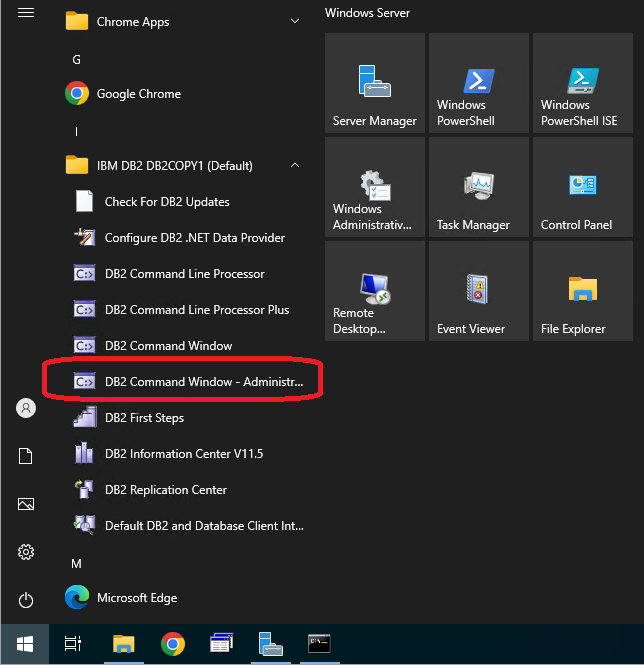Stelo Technical Documents
Restoring a DB2 control database
Last Update: 2023/10/13
Product: SQDR Plus and SQDR
Version: All
Article ID: SQV00PL080
Objective
SQDR Plus and SQDR uses DB2 LUW as a control and staging database for its backend logic. The goal of this document is to provide users guidance on how to restore their control databases.
Table of contents
Considerations
Please refer to the following considerations to ensure a seamless recovery process
- This tech note applies to combined tier installations. For split tier installations, ensure the following:
- ALL Tier 03 (SQDR) services have been stopped before proceeding to backup the DB2 control database(s).
- Download the backup script to ALL Tier 02 (SQDR Plus) servers.
- Ensure that there is enough space in the DB2 data drive.
Procedure
The following procedure shows how to restore the control databases through a batch script
- Open "DB2 Command Window - Administrator" as shown below
- Download the following scripts to C:\Stelo
controldb-list.bat
controldb-restore.bat
- In the DB2 Command Window, change directories to where the backup script has been downloaded
- Run the controldb-list.bat script. Enter the password when prompted. If successful, a file called list_of_dbs.txt will be created. This will contain a list of control databases to be restored.
- Edit the list_of_dbs.txt and delete any control databases that do not need to be restored.
Warning: Review this step carefully as any database listed in the list_of_dbs.txt will be dropped prior to restoring. - Run the controldb-restore.bat script to restore the control database

DISCLAIMER
The information in technical documents comes without any warranty or applicability for a specific purpose. The author(s) or distributor(s) will not accept responsibility for any damage incurred directly or indirectly through use of the information contained in these documents. The instructions may need to be modified to be appropriate for the hardware and software that has been installed and configured within a particular organization. The information in technical documents should be considered only as an example and may include information from various sources, including IBM, Microsoft, and other organizations.

